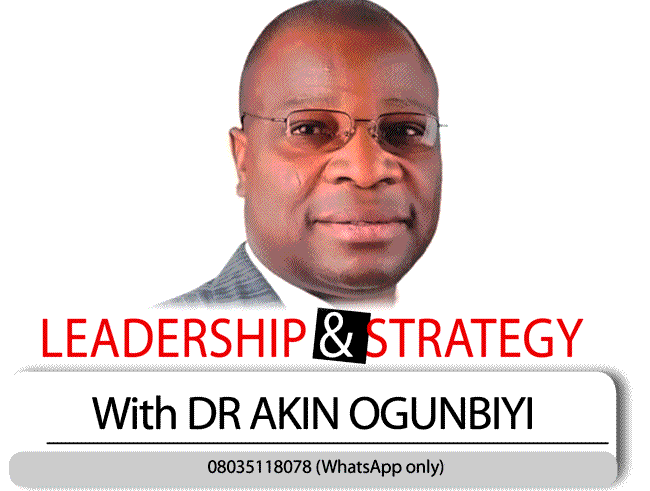I am always uplifted, guided and inspired by Albert Einstein’s profound wisdom and insight on the values of imagination, curiosity and creativity. His profound answer to a question on why (business) leaders should be “passionately curious” was that “in the middle of difficulty lies an opportunity.” My philosophy of doing business is to regularly make appreciable profit by adding tremendous beneficial values to peoples’ lives. I strive to be a never-relenting trailblazer of “real” progress by questioning the status quo and overturning conventional wisdom, in order to push-through affordable products and services that will satisfy consumers’ needs and wants. Goods and services, in my avowed view, should adequately satisfy physical and psychological well-being.
A sales strategy that directly links businesses with the people will surely be always relevant, focused and very effective. Value propositions will be compelling because they adequately capture the benefits consumers require and ultimately, desire. With people-relationship, products and services will command credibility, immediate adoption and of course, loyalty (short and long terms).
The playing field is defined as the “productive interaction space” in which companies utilise integrative set of choices to position themselves in ways that they “win” in serving consumers better than other companies. The strategy for choosing “where to play, how to play and how to win” must be coherently articulated, doable and translated to actionable steps that deliver sustainable success. However, today, tuning and retuning hitherto effective marketing and sales machines are not achieving expected results or numbers are not adding-up or achieving expected targets. There are dramatic shifts in consumers’ buying behaviour. As a matter of fact, their behaviour is often erratic. Selling is also facing longer sales cycle times, decreasing conversion rates and less reliable forecasts. Leaders are having to sort-out troves of research results to find pockets of growth in micro-sales. Sales and other departments in companies are siloed and “crying” for an urgent need for internal collaboration in order to achieve elusive progress. Let us ask ourselves: how do we align with consumers’ thinking and achieve receptivity?
There is a new thinking that puts emphasis and importance on social intelligence as opposed to individual psychology in our quest to achieve people’s (consumers) receptivity. Daniel Goleman and Richard Boyatzis in an article titled, ‘Social Intelligence and the Biology of Leadership,’ explained that social intelligence, a set of interpersonal competencies built on specific neural circuits, can help us “inspire others to be receptive” through its relationship based construct. Through social intelligence according to the article, we now have the capacity to understand other people’s feelings including emotions. We can even in addition, acquire knowledge, facts and truths.
Value-based sales of beneficial goods and services will therefore answer to businesses’ efforts to satisfy survival, well-being and emotions. We can also adopt the “people insight” or the knowledge derived from consumer understanding to produce more appealing brands. The way forward in order to “win today” will therefore include the flexibility approach instead of fixation on process “disciplined” opportunity scorecards, qualification criteria and activity metrics. Other options are creativity to progress consumers’ behaviours to achieve sales, collaborative solution development between sales people and consumers, the and the problem-solving approach and disruptive insight into consumers about fully satisfying their needs. The point I am making is that, selling will now be driven essentially by reliance on consumer insights and facts-driven judgments.
Another draw-down from this new thinking is the very reliable “Return on Relationships with loyal consumers” (ROR). Through this approach, we get customers to market, sell and collaboratively create products and services. Today, some loyal consumers carry the “label” of “The Most Innovative Designers.” Bill Lee, in his classic book produced by Harvard Business Review Press titled, ‘The Hidden Wealth of Customers,’ enjoined business leaders “to forge and create beneficial relationship with the people you serve.” Consumers can provide unique business advantages by selling offerings, penetrating new customers and markets, leveraging demand through the social media and other apps, building e-books, LinkedIn, SEO blog and so on. Customers can also drive creation and management of customer groups and communities. They can substantially contribute to the design of new products and services as well as forge acceptance and patronage. They can help improve focus on sales strategy especially, on customer issues.
Consumers working in unison with the upskilled sales team (and other relevant officials) can help the entire sales system have a deep understanding of “The Whole Person,” the consumer –who he is, what he needs, what he wants; his aspirations and what he does for a living. This will help businesses unlock insights into consumers’ attitudes, beliefs, behaviours and habits. We can use these insights to adequately understand the practices that will be effectively “worked” into producing satisfying products and services and therefore, delivery of delightful benefits, beneficial usage experiences and other articulated as well as unarticulated needs (and desires).
Efforts to achieve total and decisive customer-centric innovation must become central and even occupy the driver’s seat of businesses. We must operationalise these innovative new ideas and make them central to goals, structure, systems, culture and leadership. Today, customer-centric innovation must become the heart of the value-creating and value-delivering chains in order to effectively stem the tide of these challenging times.
READ ALSO FROM NIGERIAN TRIBUNE
WATCH TOP VIDEOS FROM NIGERIAN TRIBUNE TV
- Let’s Talk About SELF-AWARENESS
- Is Your Confidence Mistaken for Pride? Let’s talk about it
- Is Etiquette About Perfection…Or Just Not Being Rude?
- Top Psychologist Reveal 3 Signs You’re Struggling With Imposter Syndrome
- Do You Pick Up Work-Related Calls at Midnight or Never? Let’s Talk About Boundaries







